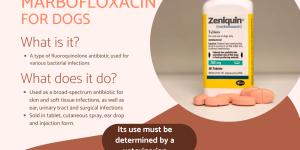Insulin for Dogs with Diabetes - Dosage, Types and Price



See files for Dogs
Most of us won't think about our insulin levels until there is a problem with them. Insulin fulfills a fundamental function in human bodies, but is equally essential for dogs. Incorrect insulin levels can cause a range of symptoms, some of which can be difficult to observe in our dogs, especially at first. When a body cannot produce enough insulin or when the cells cannot process it properly, diabetes occurs. This is a relatively common disease in dogs, but is fortunately treated with the administration of supplementary insulin.
In this AnimalWised article, we examine insulin for dogs with diabetes and help you understand the different types of canine diabetes medication. We also investigate the dosage and price of insulin for dogs.
What is Insulin?
Insulin is a naturally occurring hormone which is created within the dog's body, specifically in the pancreas. It is essential for canine metabolism as it is their main anabolic hormone. It allows for glucose in the blood to pass into the cells, regulating carbohydrates, fats and protein in the process. Without it, the body cannot function properly and they animal could collapse.
There are various reasons why a dog's body cannot produce sufficient insulin, but the result is the same. This result is hyperglycemia, the result of too much glucose in the blood plasma. Since there is insufficient insulin to regulate the glucose, added insulin must be administered artificially. The name of such insulin deficiency is diabetes mellitus, a disease which affects humans as well as dogs.
In humans, diabetes is categorized mainly as type 1 and type 2 diabetes. There has not been a rigid definition of diabetes in dogs types, but we can loosely organize them into similar categories.
When a dog is diagnosed with diabetes, the veterinarian will prescribe insulin to decrease blood-glucose levels. We must also observe for any additional clinical symptoms as further health complications can arise. If we correctly control their glucose levels with insulin, our dog can lead a happy life with a similar life expectancy to a dog without diabetes.
How is insulin for dogs administered?
Firstly, any specific guidance on how to give insulin to your dog will be provided by the veterinarian after diagnosis. They will choose the correct type of insulin for your dog, as well as any other guidelines to follow.
Part of the kit you will need for giving insulin to your dog is a testing machine, known as a glucometer. You will need to take a small sample of your dog's blood and place it on a testing strip. This is then inserted into a machine which gives a reading of the dog's blood-glucose levels. Humans will do this every time they inject insulin. However, in veterinary practice, it is not considered as necessary. Glucometer tests should still be carried out regularly, but not necessarily every day. Your veterinarian will determine the correct approach.
Insulin for dogs is given as a subcutaneous injection. This can sometimes be administered as a shot under the skin, usually between the shoulders. However, veterinary insulin pens are becoming much more common. This allows the dose to be loaded and inserted into the skin more easily. Insulin needs to be stored in the refrigerator, not the freezer or at room temperature.
To know how to give insulin injections to dogs, take a look at our article on how to give a dog a shot under the skin.

Types of insulin for dogs
Many pet guardians wonder if insulin for humans the same type for dogs? Some types of human insulin can be prescribed to dogs. These include NPH, a highly purified porcine insulin or glargine, a synthetic insulin which is created using recombinant DNA technology. Another long-lasting type of insulin is detemir, similarly created synthetically. However, there are types of insulin created for synthetic use. They include:
- Caninsulin: it is an intermediate-acting insulin (i.e. lasts for a medium length of time). It is insulin from pigs which has been rendered and purified. It can be used as it is structurally the same as canine insulin, minimizing the risk of anti-insulin antibodies which could be generated. It is a mixture of crystalline and, to a lesser extent, amorphous zinc insulin. The peak of its effect occurs 8-9 hours after its administration. It lasts about 12-14 hours.
- PROZINC: this is a human insulin that is known by the name of insulin protamine zinc and it is obtained using recombinant DNA technology. The zinc and protamine that are added help to delay both its absorption and the start of its action. It breaks down in the liver or kidneys.
Image: elavet.com
Insulin dosage for dogs
The appropriate insulin dosage for a dog will be calculated by a qualified veterinarian. Before determining this amount, but first they will need to know whether they need insulin at all. Many factors influence a dog's blood-glucose levels and other treatments may be required. These may include corticosteroids, but a dietary change to a reduced-carbohydrate feed might also be enough to alter blood-glucose sufficiently.
At first, the veterinarian may carry out a glucose curve. This is when data is collected to establish the correct dosage for a given dog. Basically, a dose of insulin is given and the blood is tested with a glucometer every two hours for a seta mount of time. This will tell the vet how well the insulin is working and how long its effects last.
In general, the starting dose of PROZINC or Caninsulin is 0.5 IU per kg of dog weight. You have to prick every morning, during or after their meal. Since we cannot take the dog into the veterinarian every time we need to check their levels, we will have to do this at home ourselves. Initially, the veterinarian may also require urine tests.
The dog's diet will likely be amended along as well as a dosage created. There may be some trial and error before the correct dose has been arrived at. Some doses will need to be given once a day, others twice. We need to give the full dose, otherwise problems can arise. We should always give the amount prescribed by the veterinarian.
Insulin resistance in dogs
It should be taken into account that, sometimes, insulin resistance can occur. In these cases, the need for insulin may increase because the original dosage becomes insufficient. There are several causes that can lead to insulin resistance, including obesity, secondary diseases, drug interactions, etc. It indicates that the diabetes is still not controlled and, therefore, it is necessary to go to the veterinary clinic again.
Precautions and side effects of insulin for dogs
A veterinarian will need to know the clinical history of the dog before prescribing insulin to them. This means, if they are taking any other medications, they need to be aware. Insulin for dogs can be used during pregnancy and lactation, but the vet will need to implement strict controls. If any changes take place or negative symptoms occur, you should tell the veterinarian immediately.
The administration of insulin can result in a hypoglycemic shock. This occurs when the glucose levels in the blood drop below normal. The clinical picture is usually mild, but may include hunger, anxiety, disorientation, uncertain movements, muscle spasms, decreased coordination or dragging of hind legs. If we think the dog s experiencing a sharp drop in blood sugar, we should give them something to eat such as honey. We will need to take the dog back to the veterinarian for assessment and their insulin dosage ay be adjusted.
Although rare, reactions may occur at the injection site. They do not usually require treatment and will resolve on their own. Changing the injection site is recommended if this occurs regularly.

How much does insulin for dogs cost?
ProZinc Insulin is available in 10 ml vials containing 40 IU per ml. Its price is about 120 US dollars. For its part, Caninsulin is usually provided in the pen dispenser which can make it a little more expensive. You can save money by using different brands, but you will need to ask your veterinarian if it they are suitable. How much money you will spend on insulin per month depends on how much your dog needs.
The possible need for canine insulin is something you must consider before adopting a dog. We need to ensure we have the means to be responsible caregivers. However, if you find yourself short on money, it is possible you will be able to find a pet plan which can ease the monthly costs. Speak to your veterinarian or local animal authority if you need assistance paying bills.
This article is purely informative. AnimalWised does not have the authority to prescribe any veterinary treatment or create a diagnosis. We invite you to take your pet to the veterinarian if they are suffering from any condition or pain.
If you want to read similar articles to Insulin for Dogs with Diabetes - Dosage, Types and Price, we recommend you visit our Medicine category.
- Naranjo, Morales and Meilan. (2014). Your dog suffers from diabetes mellitus . Argos special issue All about diabetes. pp. 10-15.







